Furong Zhao
Deep Dynamic Scene Deblurring from Optical Flow
Jan 18, 2023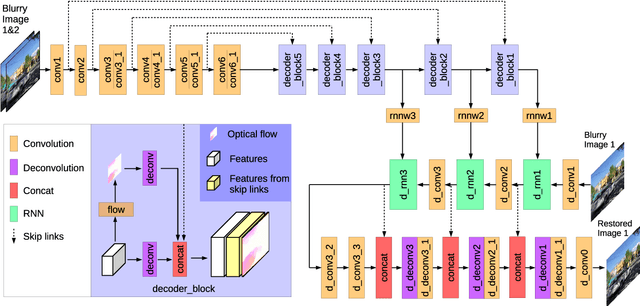
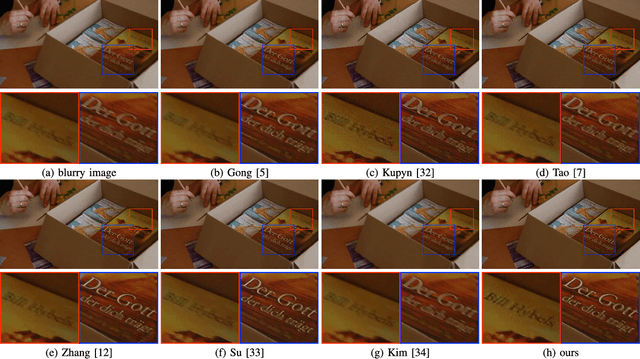
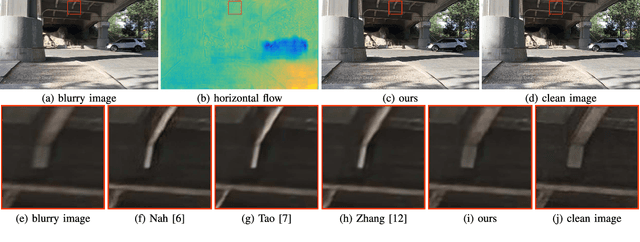

Abstract:Deblurring can not only provide visually more pleasant pictures and make photography more convenient, but also can improve the performance of objection detection as well as tracking. However, removing dynamic scene blur from images is a non-trivial task as it is difficult to model the non-uniform blur mathematically. Several methods first use single or multiple images to estimate optical flow (which is treated as an approximation of blur kernels) and then adopt non-blind deblurring algorithms to reconstruct the sharp images. However, these methods cannot be trained in an end-to-end manner and are usually computationally expensive. In this paper, we explore optical flow to remove dynamic scene blur by using the multi-scale spatially variant recurrent neural network (RNN). We utilize FlowNets to estimate optical flow from two consecutive images in different scales. The estimated optical flow provides the RNN weights in different scales so that the weights can better help RNNs to remove blur in the feature spaces. Finally, we develop a convolutional neural network (CNN) to restore the sharp images from the deblurred features. Both quantitative and qualitative evaluations on the benchmark datasets demonstrate that the proposed method performs favorably against state-of-the-art algorithms in terms of accuracy, speed, and model size.
Trinity of Pixel Enhancement: a Joint Solution for Demosaicking, Denoising and Super-Resolution
May 07, 2019
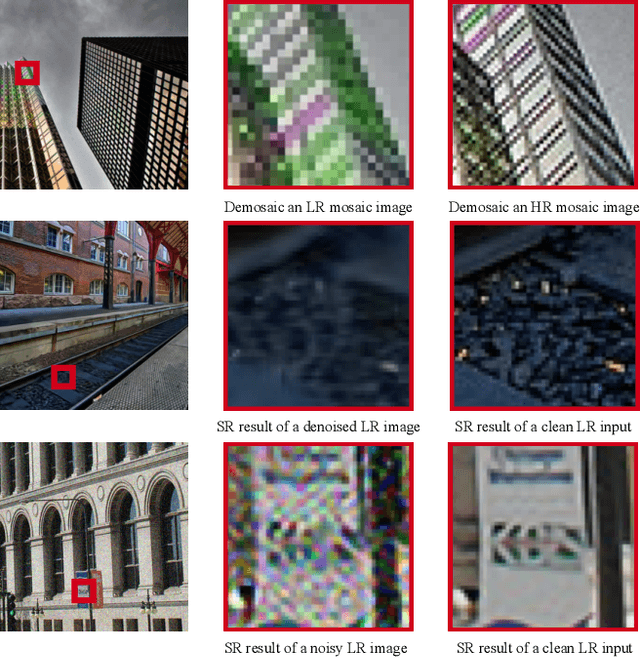
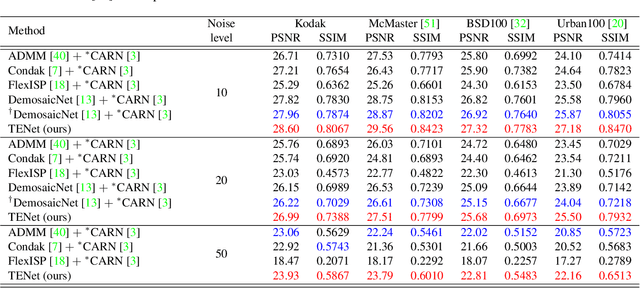
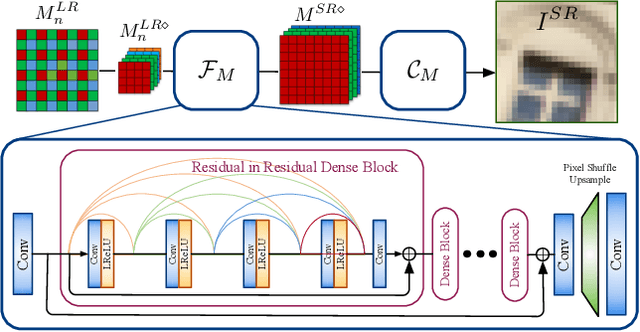
Abstract:Demosaicing, denoising and super-resolution (SR) are of practical importance in digital image processing and have been studied independently in the passed decades. Despite the recent improvement of learning-based image processing methods in image quality, there lacks enough analysis into their interactions and characteristics under a realistic setting of the mixture problem of demosaicing, denoising and SR. In existing solutions, these tasks are simply combined to obtain a high-resolution image from a low-resolution raw mosaic image, resulting in a performance drop of the final image quality. In this paper, we first rethink the mixture problem from a holistic perspective and then propose the Trinity Enhancement Network (TENet), a specially designed learning-based method for the mixture problem, which adopts a novel image processing pipeline order and a joint learning strategy. In order to obtain the correct color sampling for training, we also contribute a new dataset namely PixelShift200, which consists of high-quality full color sampled real-world images using the advanced pixel shift technique. Experiments demonstrate that our TENet is superior to existing solutions in both quantitative and qualitative perspective. Our experiments also show the necessity of the proposed PixelShift200 dataset.
Iterative Residual Image Deconvolution
Nov 04, 2018
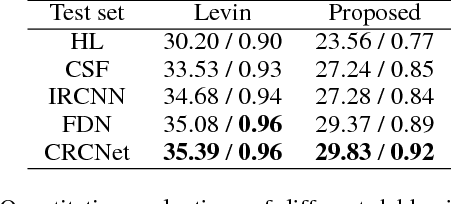
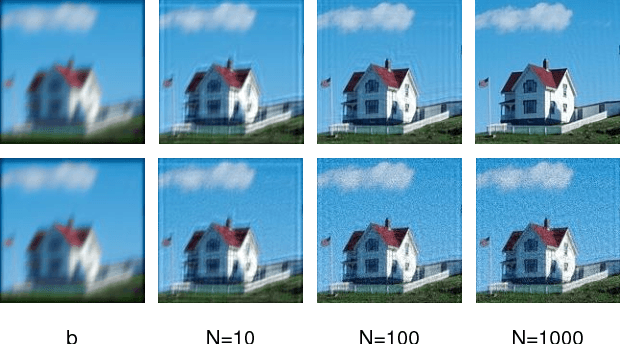

Abstract:Image deblurring, a.k.a. image deconvolution, recovers a clear image from pixel superposition caused by blur degradation. Few deep convolutional neural networks (CNN) succeed in addressing this task. In this paper, we first demonstrate that the minimum-mean-square-error (MMSE) solution to image deblurring can be interestingly unfolded into a series of residual components. Based on this analysis, we propose a novel iterative residual deconvolution (IRD) algorithm. Further, IRD motivates us to take one step forward to design an explicable and effective CNN architecture for image deconvolution. Specifically, a sequence of residual CNN units are deployed, whose intermediate outputs are then concatenated and integrated, resulting in concatenated residual convolutional network (CRCNet). The experimental results demonstrate that proposed CRCNet not only achieves better quantitative metrics but also recovers more visually plausible texture details compared with state-of-the-art methods.
 Add to Chrome
Add to Chrome Add to Firefox
Add to Firefox Add to Edge
Add to Edge